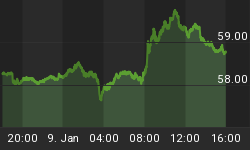Our monthly Monetary Watch, an Austrian take on where we are on the monetary inflation front and what's next...
Headline Monetary Aggregates, Where We Are
After December's blistering rates of growth, the U.S. money supply aggregates based on the Austrian definition of the money supply, what Austrians call the True Money Supply or TMS, slowed markedly in January, with narrow TMS1 posting an annualized rate of growth of just 2.1% and broad TMS2 an annualized rate of growth of 4.6%. That brought the annualized three-month rate of growth on TMS1 and TMS2 to 21.5% and 14.7%, respectively, still high, but down from December's 22.3% and 18.1% rates. No doubt some of this pullback was seasonal, as was December's surge, but as we discuss below it's a data point worth watching, as private banking institutions were a total no show in January.
Turning to our longer-term twelve-month rate of change metrics - more indicative of the underlying trends - and focusing on our preferred TMS2 measure, we find that TMS2 saw another healthy increase in January, growing at an annualized rate of 9.9% for the second month in a row. As we said in last month's Monetary Watch, we think that's close enough to 10% to mark January 2011 as the 24th time in the last 25 months that TMS2 posted a twelve-month rate of growth in the double digits. That equates to a cumulative increase in TMS2 of some 26% over those 25 months. To put those numbers into perspective, the run-up to the now infamous housing bubble turn credit implosion turn Great Recession saw a string of 36 months of double digit growth for a cumulative increase of 48%. So yes, today's inflationary largesse may be only 54% of that which brought on the Great Recession, but this one's still going strong.
M2, the mainstream's favorite monetary aggregate, is now decidedly up, in January posting a year over year rate of growth of 4.3%. That's up 70 bps from December's 3.6% and marks the highest year over year rate of growth since November 2009. As readers of this site are aware, although THE CONTRARIAN TAKE posits M2 as a grossly misleading measure of the money supply, the mainstream does not. They think M2 is a perfectly fine measure of the money supply, including the world's most powerful money printer, Chairman Bernanke. And as we argued in The Bernanke Arbitrage, all other things equal, a rising M2 could at some point give Bernanke pause, a reason to slow his QE efforts and in so doing slow the growth in the money supply. But all other things are not equal to Chairman Bernanke. To the Chairman, unemployment is still too high, core inflation is still too low and housing and municipal bound problems are all around. In the Chairman's mind, these all other things are the things that argue for more not less QE, especially with M2 growing at a still relatively low, although rising rate of 4.3%. Clearly though it's a data point we'll be watching.
True "Austrian" Money Supply (TMS), January 2011
![]() Larger Image
Larger Image
Click here to read the rest of the article...















